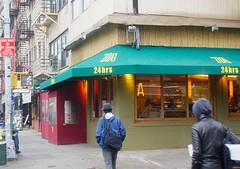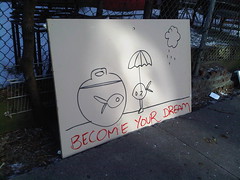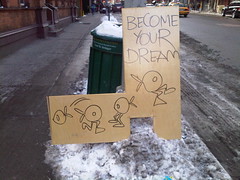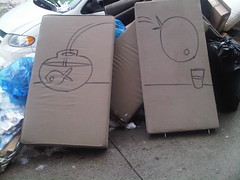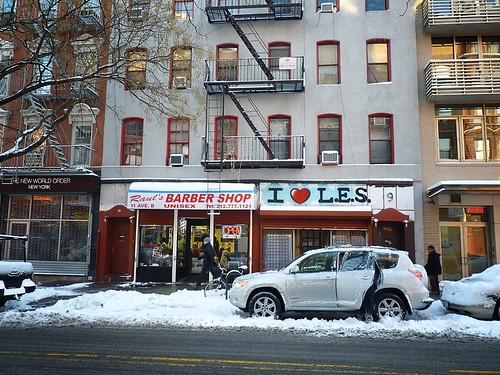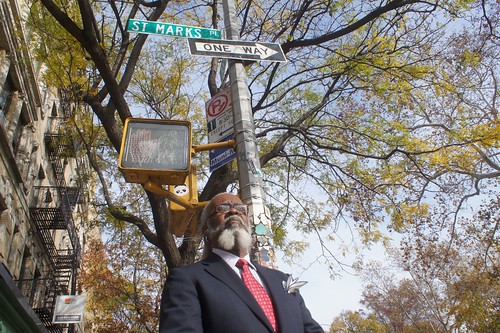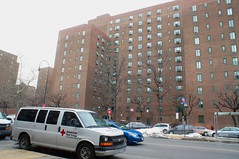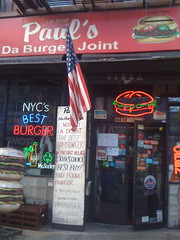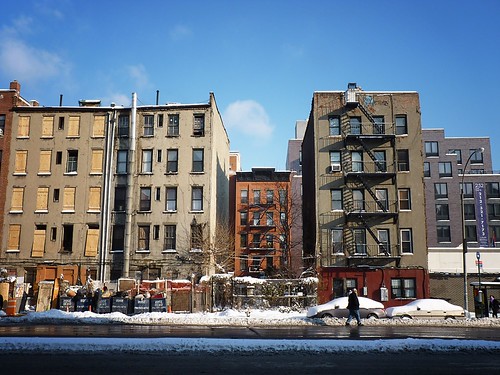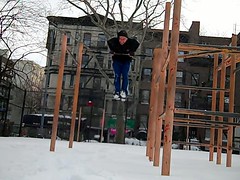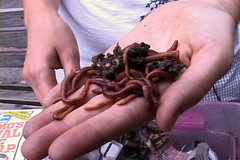 Samantha Ku Carey Pulverman, the “worm lady” of the Lower East Side Ecology Center, shows off her red wigglers. The worms are an essential part of composting process.
Samantha Ku Carey Pulverman, the “worm lady” of the Lower East Side Ecology Center, shows off her red wigglers. The worms are an essential part of composting process.Bugs and insects are an apartment dweller’s nightmare. But some East Village residents are embracing a creepy crawler as an ally in urban composting: the red wiggler worm, a.k.a. Eisenia foetida. With the right mix of worms, newspaper and food waste, combined with about four months’ worth of patience, you can end up with several pounds of the moist, sticky brown compost known to green thumbs as “steroids for plants.”
In an effort to be more “green,” Richard Carlsen, 53, a public school teacher, bought a worm bin 18 months ago to use in his East Ninth Street apartment. “I thought composting was out for me not having a yard, but after researching vermicomposting, I was like, ‘Oh, let me give it a try,’ and it’s worked out great,” said Mr. Carlsen.
He uses the rich fertilizer excreted by the worms on his houseplants, and he gets rid of food leftovers. ”I’m proud of my worms,” he said. “It’s amazing, you stick something in there, and in a week it’s gone.”
As a result of keeping the worm bin in his living room, Mr. Carlsen has put up with some extra insects like mites, fruit flies and gnats. He uses frequent vacuuming and fly traps to control the pest population.
For recyclers who can’t abide by worms in their homes, outdoor composting is even more passive. You can visit one of four official demonstration sites at community gardens in the East Village (see map below) to dump select food scraps into bins filled with various plant clippings.
Once every few weeks, someone in the garden will give it a good toss for aeration. In several months, it will become the nutrient-rich compost and potting soil that make avid gardeners shell out the big bucks.
There are other places to compost, including The Lower East Side Ecology Center, which has a community compost drop-off in the northeast corner of the Union Square Greenmarket for local residents.
Robert Appleton, a teacher on sabbatical who lives in the East Village, brings his compost to the Union Square Greenmarket and the 4th Street Food Co-op when he does his weekly grocery shopping.
“I eat a lot of fruits and vegetables, so anything left over I just bring here in a plastic bag, usually twice a week,” said Mr. Appleton. “My apartment’s too small for me to do my own composting.”
Each week, the large black garbage bins at the compost drop-off site are filled with the rotting, moldy, smelly piles of New Yorkers’ apple cores, eggshells, and coffee grounds. The Ecology Center, in turn, uses the donated scraps to create compost and potting soil, which sells for $7 per 5 pound bag three months later at the same stand in Union Square.
Learning More About Composting
The Department of Sanitation’s NYC Compost Project also operates demonstration sites at the following community gardens:
- La Plaza Cultural, East Ninth Street and Avenue C
- Dias y Flores Garden, East 13th Street between Avenues A and B
- El Sol Brillante Garden, East 12th Street between Avenues A and B
- Earth School Garden, East 6th Street and Avenue B
View NYC Compost Project Demonstration Sites in a larger map
 Courtesy David Amram David Amram will celebrate his 80th birthday with a fundraiser at the Bowery Poetry Club Jan. 30.
Courtesy David Amram David Amram will celebrate his 80th birthday with a fundraiser at the Bowery Poetry Club Jan. 30.



